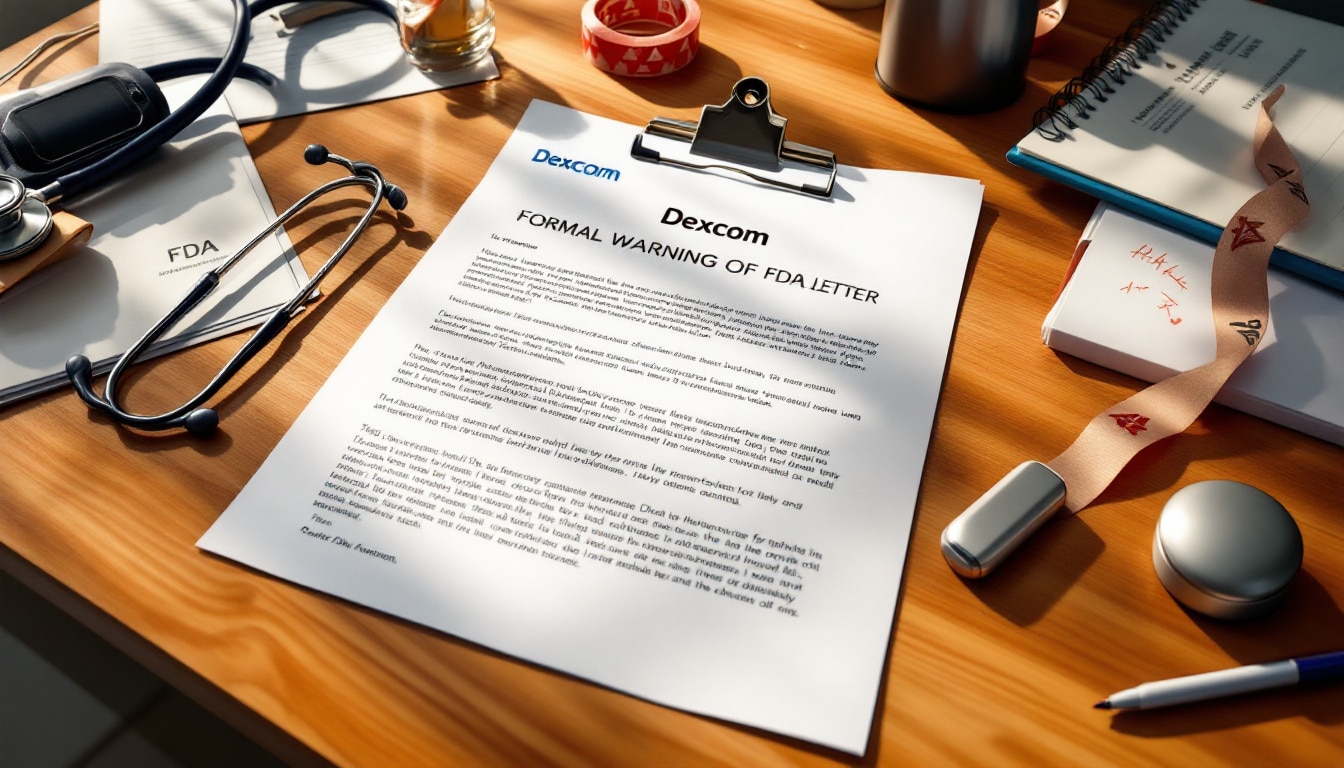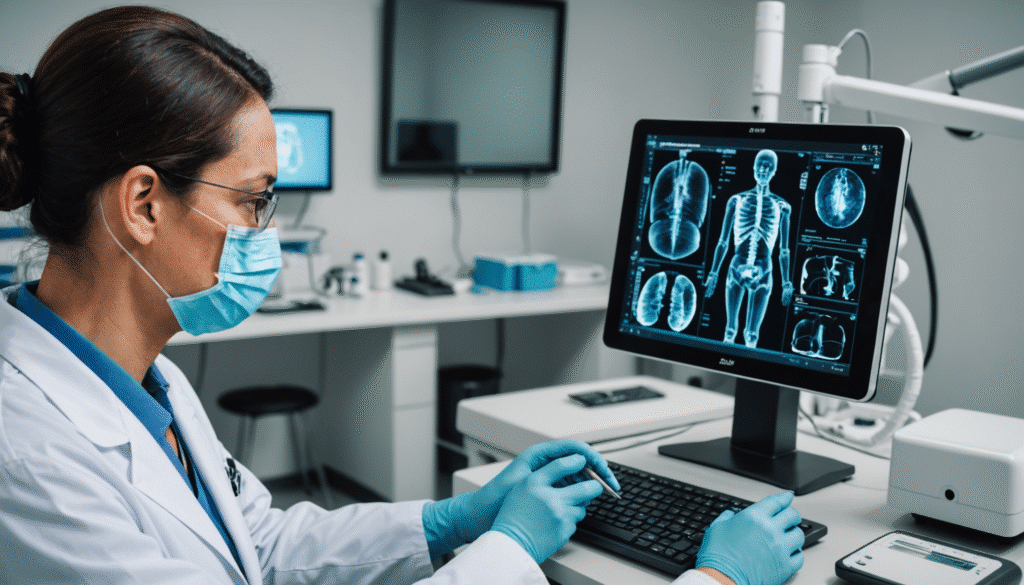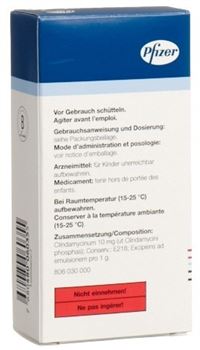The field of healthcare is constantly evolving, and today, an important new milestone has been reached.
Dexcom, a leader in continuous glucose monitoring devices, is facing unexpected challenges.
The recent design changes to their G6 and G7 sensors have drawn the attention of the FDA.
Dexcom has made a significant modification to a component used in its sensors, raising concerns about the quality and accuracy of the devices. According to a warning letter issued by the Food and Drug Administration, sensors equipped with the new component exhibited lower performance compared to previous models. In response, Dexcom has immediately halted the distribution of the G7 sensors containing this component, although the affected G6 sensors have not yet been impacted by this measure.
An analyst from J.P. Morgan, Robbie Marcus, indicated that the component in question is a chemical compound used for dipping the sensor wires. Dexcom had begun producing this compound in-house to diversify its supply chain, but this led to quality control issues. Despite these challenges, Dexcom‘s Chief Operating Officer, Jake Leach, assures that this warning letter should not delay the approval of future products, including a 15-day version of the G7 sensor.
Last year’s FDA inspection of Dexcom‘s facilities in San Diego and Mesa, Arizona, revealed several deficiencies, including failure to provide prior notification for major changes made to the sensors. These modifications have led to increased risks for users relying on the sensors to adjust their insulin doses or make other diabetes treatment decisions. Additionally, the FDA has expressed concerns regarding the monitoring procedures for glucose and acetaminophen concentrations used in testing the G6 and G7 sensors.
Despite these challenges, Dexcom plans to launch a new version of its device in the second half of the year. Marcus believes that many of the issues highlighted in the warning letter can be quickly resolved, thus minimizing any potential delays in product approval. However, he emphasizes that “while there is always a risk that this could hinder future product approvals, we do not expect to significantly delay the approval of the 15-day G7 sensor.”
In conclusion, while Dexcom is facing regulatory and quality control challenges, the company seems determined to overcome these obstacles and continue to innovate in the field of medical devices. Users and healthcare professionals remain attentive to future developments and Dexcom‘s ability to ensure the reliability and safety of its products.
In March 2025, Dexcom, a leader in continuous glucose monitoring technologies, received a warning letter from the Food and Drug Administration (FDA). This letter raises significant concerns about unauthorized modifications made to key components of its G6 and G7 sensors. This situation highlights the challenges faced by medical device companies in an ever-evolving regulatory environment.
what design changes were made by dexcom?
Dexcom made a significant change in the design of a component used in the resistance layer of its G6 and G7 sensors. According to the FDA’s warning letter, this modified component, a chemical composition in which the sensor wires are dipped, has resulted in a decrease in the accuracy of glucose measurements. Initially, Dexcom began producing this composition in-house to ensure redundancy in its supply chain. However, this modification was not adequately validated prior to its implementation, compromising the reliability of the sensors.
Sensors equipped with this new component showed inferior performance compared to those using the old component. In response to these results, Dexcom immediately halted the distribution of the affected G7 sensors. However, the company’s response did not address the G6 sensors already distributed with the defective component, leaving uncertainties regarding the safety and reliability for users of these devices.
what were the impacts on the accuracy of dexcom sensors?
The accuracy of Dexcom sensors is crucial for individuals with diabetes who rely on these devices to manage their blood glucose levels. The change in chemical composition has compromised this accuracy, thus increasing risks for users. According to the FDA’s warning letter, the modified sensors could lead to insulin dosing errors or incorrect diabetes treatment decisions, potentially jeopardizing patients’ health.
This loss of accuracy not only affects user confidence in Dexcom products but also raises questions about the company’s quality control protocols. G6 sensor users, who have not been withdrawn from the market, continue to use a potentially less reliable product, which could have serious consequences for their daily diabetes management.
how did dexcom respond to the warning letter?
In response to the warning letter, Dexcom took immediate steps to halt the distribution of the G7 sensors affected by the change in chemical composition. Dexcom’s Chief Operating Officer, Jake Leach, stated in an interview with MedTech Dive that the company does not expect this letter to impact future product approvals, including a 15-day version of its G7 CGM sensor. Dexcom has also submitted the modified device to the FDA and plans a launch in the second half of the year.
Despite these reassurances, J.P. Morgan analyst Robbie Marcus indicated in a research note that many of the issues raised in the letter can be quickly resolved. He added that the warning letter could account for minor delays in the 15-day sensor approval, but that Dexcom remains within the 90-day timeframe for a 510(k) submission.
what are the regulatory stakes for dexcom and the medical device industry?
This situation occurs in a context where the FDA is facing internal challenges, including the removal of pages on clinical trial diversity following orders from the Trump administration. These regulatory changes can further complicate the task of companies like Dexcom to obtain rapid and efficient approval of their products. Additionally, the reintegration of certain laid-off employees from the medical device sector by the FDA aims to strengthen quality control and ensure better oversight of changes made to medical devices (source).
Furthermore, the recent FDA classification of a recall of Olympus endoscope components as Class I underscores the importance of regulatory rigor in medical device safety (source). This decision influences not only Dexcom but also the entire industry, which must navigate a complex and often unpredictable regulatory landscape.
what are the consequences for dexcom sensor users?
Users of Dexcom sensors, particularly those using the G6 and G7 models, find themselves in a delicate position. The decreased accuracy of the sensors may lead to errors in diabetes management, thereby increasing the risk of serious complications. Dexcom has reassured its users by halting the distribution of the affected G7 sensors, but the G6 sensors remain a concern with no immediate solution proposed.
This situation highlights the importance for users of medical devices to stay informed about recalls and warnings issued by regulators. Patients should regularly check official communications from Dexcom and the FDA to ensure they are using safe and reliable products. Additionally, it is crucial to discuss with their healthcare professional to assess available alternatives and adjust their treatment as necessary.
how does the medical community perceive this situation?
The FDA’s warning letter to Dexcom has elicited reactions within the medical community. Many surgeons and healthcare professionals, aware of the importance of accuracy in glucose sensors, view this situation as a call to strengthen quality controls and regulatory oversight in the medical device industry.
Experts in medical technology believe that unvalidated modifications can compromise patient and healthcare professional trust in the devices. Dexcom’s transparency in its response and ability to swiftly rectify identified issues will be crucial in restoring this trust. Moreover, similar past case studies show that companies capable of effectively managing such crises can maintain their reputation and continue to innovate.
what lessons can be learned from this case?
The Dexcom case highlights several essential lessons for medical device companies and regulators. Firstly, the importance of rigorous validation before making changes to critical components cannot be underestimated. Any modification must be thoroughly tested and approved to ensure the product’s safety and effectiveness.
Secondly, transparent communication with regulators and users is crucial in the event of a problem. Dexcom quickly responded by halting the distribution of the affected sensors, but a more comprehensive approach to addressing the G6 sensors could have avoided additional concerns among users. Finally, this case underscores the necessity for companies to remain vigilant regarding regulatory developments and adapt their practices accordingly to maintain compliance and consumer trust.
what are the next expected developments?
Dexcom plans to launch a new version of its G7 sensor in the second half of 2025, after submitting the modified device to the FDA. This anticipation is based on confidence in its ability to quickly resolve the issues identified in the warning letter. Analyst Robbie Marcus expects minimal delays and that the approval for the 15-day sensor will proceed on schedule.
Meanwhile, the FDA continues to strengthen its quality controls and approval processes, as evidenced by the strict classification of medical device recalls. Companies in the sector must remain attentive to regulatory requirements and invest in robust internal processes to avoid similar situations. Additionally, users can expect increased oversight and regular updates concerning the safety and performance of the devices they use.
Ultimately, this case emphasizes the importance of close collaboration between medical device manufacturers, regulators, and the medical community to ensure the safety and effectiveness of essential healthcare technologies.













